Search
Remove Ads
Advertisement
Summary 
Loading AI-generated summary based on World History Encyclopedia articles ...
Search Results
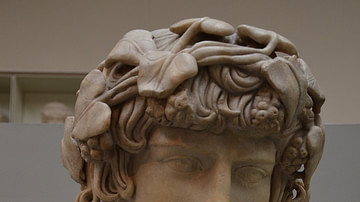
Definition
Antinous
Antinous (l. c. 110-130 CE) was a youth of Bithynia who became the beloved of the Roman emperor Hadrian (l. 76-138 CE, r. 117-138 CE) from around the age of 13 until his death at nearly 20. His year of birth is unknown as are any details...

Definition
Hadrian
Hadrian (l. 78-138 CE) was emperor of Rome (r. 117-138 CE) and is recognized as the third of the Five Good Emperors (Nerva, Trajan, Hadrian, Antoninus Pius, and Marcus Aurelius) who ruled justly. His reign marked the height of the Roman Empire...
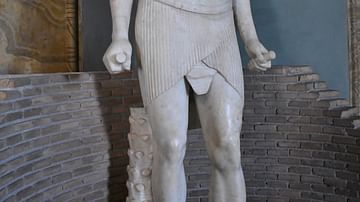
Image
Statue of Osiris-Antinous
The marble statue depicts a man named Antinous and dates back to the Imperial Roman Period of Egypt late in the reign of Emperor Hadrian, about 131-138 CE. Hadrian actually founded and named a city, Antinopolis, after Antinous' death in 130...

Image
Antinous as Silvanus
Marble relief depicting Antinous as Silvanus (god of woods and fields) harvesting grapes. Antinous is wearing a pine wreath and the exomis, the Greek tunic fastened over the left shoulder only. He is accompanied by a hound and carries a pruning...
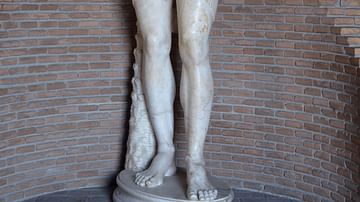
Image
Antinous as Osiris
Statue of Antinous as Osiris in white marble, 131-138 CE, probably found in the Antinoeion at Hadrian's Villa (a sanctuary dedicated to Antinous). Now in Vatican Museums (Gregorian Egyptian Museum).
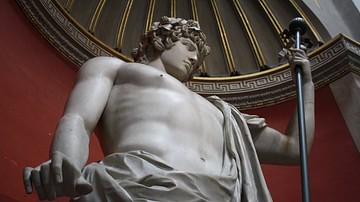
Image
The Braschi Antinous
The colossal statue of Antinous, favourite of Roman Emperor Hadrian, who drowned in the Nile in 130 CE and was officially made a god by the emperor. Excavated from the site of Hadrian's villa. (The Vatican Museums, Rome).
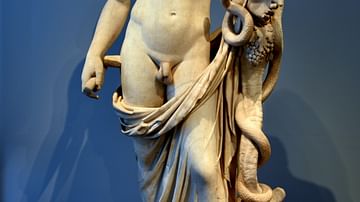
Image
Colossal Statue of Antinous
The head and the statue are ancient but were combined as recently as the 18th century. The portrait depicts the Roman Emperor Hadrian's lover, Antinous, depicted with a snake and cornucopia. The attributes allow the statue to be interpreted...
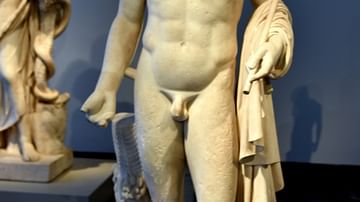
Image
Antinous as Omphalos Apollo
This torso, amended to resemble the statue of the Capitoline Antinous in Rome, belongs to a series of ancient copies of the so-called "Omphalos Apollo". This famous Greek original from around 460 BCE is preserved in several ancient copies...
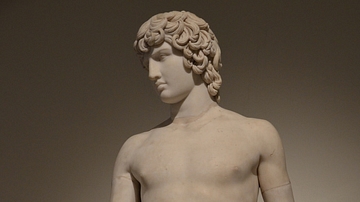
Image
The Antinous Farnese
The Antinous Farnese (named after its one-time owners the Farnese family), 130-138 CE, Naples Archaeological Museum.

Image
Antinous as Dionysus
Marble bust of Antinous as Dionysus, from Rome, 130-140 CE. (British Museum)